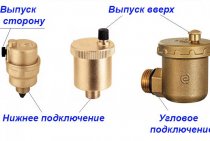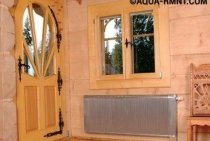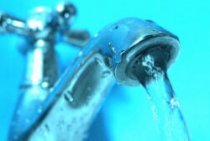Installing corrugations on the toilet subtleties and nuances
The process of installing the corrugation is very closely related to the installation of the toilet - you can not put the toilet, and then connect it to the sewer with a corrugation. Everything will have to be combined and done in a strictly defined sequence.
- To begin with, the corrugation must be pulled over the outlet of the toilet bowl. It is put on very easily, but nevertheless, inaccurate movements can lead to breakage of the product. If the sealing rubber in the socket is smeared with soap, the corrugation will fit onto the socket easily, with minimal effort - in any case, it must be pulled with a twist.
- Then we move the toilet to the sewer socket and insert the corrugation into it, after which we position the pot in the desired position and mark the places of its attachment.
-
We take out the corrugation from the sewer socket. We drill holes for fasteners in the floor and return everything to its place, inserting the corrugation into the sewer.
- Now, after a test drain, when you make sure that there are no leaks, the toilet bowl can be thoroughly fixed to the floor. In principle, that's all, but there is one subtlety - in order for the rubber to seal the connection between the corrugation and the old cast-iron sewer, the socket of the latter must be very well cleaned of rust and old seal. There are no other nuances here, and you will not need any additional sealing of the seams with silicone. It is not needed here - silicone spoils rubber over time, so you should forget about it altogether.
In conclusion, the topic of why a toilet corrugation is needed and how it is installed, I will say a few words about replacing an old, leaky corrugation with a new one. Such repairs are carried out very simply, without even resorting to removing the toilet bowl. First, compressing the corrugation like a spring, the liner must be disconnected from the toilet. Then, accordingly, pull it out of the socket. The new corrugation is placed in the reverse order - first it is inserted into the socket, then it is compressed and pulled over the toilet. This is all the superiority of the corrugations over the rigid connections for the toilet. Yes, I completely forgot - such a trick is possible only if the corrugation is stretched in the set position, and not compressed to the limit. This point should not be overlooked at the time of the initial installation of the plumbing fixture.
Corrugation for the toilet bowl advantages and disadvantages
If we compare the corrugation for draining the toilet bowl with the old technology for connecting this plumbing fixture to the sewer, then at least a couple of global advantages can be distinguished here.
- First of all, it is the installation speed. If earlier you had to wait until the sealant hardens, then in the case of a flexible outlet, the toilet bowl can be used immediately after connecting to the sewer.
- Versatility. A flexible corrugated outlet allows you to rotate the toilet bowl relative to the drain hole at almost 90 degrees in any direction. For him, there is only one limitation - the outlet does not allow you to bring the toilet close to the wall with its direct installation. Well, there are other products of this type for this.
- Reliability. It is provided by a well-thought-out system of rubber seals. On such a connection, the joint leaks only in two cases - when the corrugation is installed incorrectly and when the sealing rubber dries out from time to time.
You can see what a corrugation for connecting a toilet bowl is in this video.
This product also has disadvantages, which are not due to the very idea of \u200b\u200bthe product, but to the quality of its manufacture - cheap products of this type can burst even before installation. This happens in the inept hands of the craftsman, but it also happens because of the quality of the plastic. In general, you do not need to buy cheap products, and everything will be fine.
Corrugation for toilet bowl installation technology
Author Anna Kmeta July 16, 2013
Few remember that before the entire sewer system was a cast-iron structure, the main advantages of which were strength and reliability. Despite this, it had to be abandoned due to frequent pipe blockages, which could only be eliminated by sawing. Over time, toilet bowls and their accessories have undergone many upgrades, which entailed changes in the cross section of pipes, their length, and so on. All this led to the impossibility of using standard cast-iron networks. In the modern world, not only new toilet bowls came to the aid of plumbers, but also accessories for them, which began to be made of plastic or rubber without sacrificing quality. One of these devices is the corrugation for the toilet. Consider the features of the installation of corrugations and their main characteristics.
What is a toilet seat?
A corrugated toilet bowl is a flexible corrugated pipe that is attached to the base of the toilet drain hole and the socket of the sewer riser. It has the following features:
- inside the corrugation has an absolutely smooth surface, which prevents the accumulation of debris and, as a result, blockages;
- to increase the density of the pipe and prevent its breakthrough or cracking during casting, steel threads are used;
- a high-quality corrugation for a toilet cannot cost a penny, so it’s better not to save on this plumbing item in order to avoid unforeseen situations and frequent repairs;
- this type of plumbing pipes is perhaps the only plumbing fixture that allows you to place the toilet in a planned position that does not always meet established standards. It often has a curved shape.
Installing the corrugation for the toilet
The development of the corrugated pipe has greatly facilitated the installation of the toilet, since now it is not necessary to remember the dimensions of its socket and the diameter of the riser. The toilet corrugation is equipped with o-rings that are easy to tighten to prevent leaks. So, consider the order of installation of the corrugations:
- One end of the pipe must be put on the toilet drain hole, which must first be cleaned of debris. For greater tightness of the connection and to eliminate the appearance of unpleasant odors, it is recommended to lubricate it with sanitary sealant, preferably silicone. Be sure to ensure that the pipe is evenly fixed around the entire circumference. Then you need to wait a bit for the sealing solution to dry.
- Put the toilet in the place where it is planned to be placed, so that it does not swing.
- The second end of the corrugation for the toilet must be pushed into the sewer socket until it stops, having previously cleaned the pipe of dirt and smeared it with sealant.
- After the silicone has dried, several buckets of water should be poured into the toilet to control the strength of the installed corrugation. In the event that it does not leak, cracks or sagging do not appear on it, you can use the toilet.
The toilet corrugation can only be replaced if it leaks or is damaged. On average, its service life reaches 15 years.
Types of corrugations for the toilet, their features and purpose
Apart from variations with sizes, then the corrugation for the toilet bowl can be classified according to just three criteria.
- The degree of reliability. In this regard, it is possible to distinguish between reinforced and non-reinforced toilet corrugations. What is the difference between them? In short, in the reinforced corrugation (in its folds), a metal wire is additionally laid. In more detail, this wire does not allow the corrugation to bend more than necessary, and at the same time break in the folds. Such a corrugation lasts several times longer and at the same time costs a little more than its non-reinforced counterpart.
-
According to the degree of rigidity - based on the thickness of the plastic used for the manufacture of corrugations.Despite the fact that hard corrugation is distinguished by reliability and durability, soft corrugation is still widely used, since it is much easier and more convenient to work with it.
- According to the direction of the bell. In this respect, three more variants of products of this type can be distinguished - a corrugation with a straight socket, bent at 90 and 45 degrees. The first is considered universal. The second allows you to connect a direct outlet toilet to a floor drain. And the third is mainly used to connect the toilet to a horizontal sewer socket, located low above the floor. In general, these varieties are designed for various situations and are not completely universal among them, no matter how much one would like to.
All these points, or rather varieties, must certainly be taken into account when choosing a corrugation - or rather, they must be correlated with local circumstances, on the basis of which the choice of one or another type of corrugation is made
Particular attention should be paid to the length of the product - in the sense that you should not purchase a short corrugation in the hope that it will stretch. Maybe she will stretch, only then she can just as easily pull together, forming a leak.
Everything should be in moderation.
Toilet leaking causes and solutions
If water flows in the toilet, then the problem needs to be fixed as soon as possible, since constantly leaking water can cause flooding of your apartment and the apartments of neighbors living below. All repairs can be done by yourself.
Plumbing product malfunctions
The main causes of leakage
If water appears on the floor of the toilet room, then the reasons may be:
- deterioration of the gasket installed between the toilet bowl and the cistern;
- deterioration of the gaskets of the fasteners of the tank;
- loosening of the threaded connection between the inlet and the float valve located in the drain tank;
- a break or displacement of the corrugated hose connecting the outlet of the toilet bowl to the sewer pipe.
Leak Repair Methods
How to fix a toilet leak? First of all, you need to find out what caused the formation of a puddle. To do this, it is enough to drain the water in the toilet and visually determine the location of the leak. If it is impossible to visually determine, then you can feel each element of the system with your hands. Moisture will appear at the leak.
Replacing the gasket between the bowl and tank
If the toilet runs, but no chips or cracks were found on the cistern during visual inspection, then the reason lies in the wear of the gasket located between the toilet bowl and the cistern. Troubleshooting occurs as follows:
- the water supply of the toilet is blocked;
- water is completely drained from the drain tank. Residual water is recommended to be removed with a rag;
- disconnect the hose that brings water to the tank;
Disconnecting the plumbing from the toilet bowl
- the tank fixing bolts are loosened;


